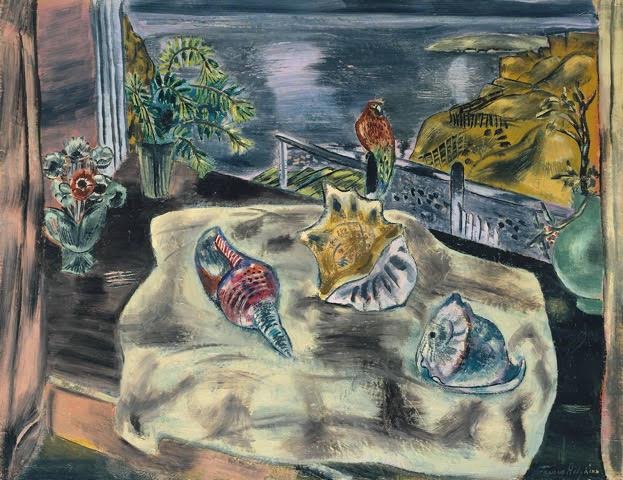- All our books
- Categories:
- Adultery
- America
- Architecture
- Biography
- Bloomsbury
- Childhood
- Children (books for)
- Cookery Books
- Country Life
- Diaries
- Education
- Family
- Fathers
- Gardening Books
- Gay and Lesbian
- Grandmothers
- History
- House and Garden
- Humour
- Ireland
- London
- Love Story
- Men (books about)
- Men (books by)
- Mothers
- North of England
- Overseas
- Poetry
- Politics
- Race
- Science Fiction
- Scotland
- Sex
- Shopping
- Short Stories
- Single Women
- Social Comedy
- Suffragettes
- Teenagers (books for)
- Thrillers
- Translations
- Victoriana
- Widows
- Woman and Home
- Working Women
- WWI
- WWII
- Persephone Merch.
- Audiobooks
- Book Tokens
- Notebook
- Persephone Classics
- Catalogue
Find a book

A Book a Month
We can send a book a month for six or twelve months - the perfect gift. More »

Café Music
Listen to our album of Café Music while browsing the site. More »
Order This Book

PREFACE BY ANN THWAITE
400pp
ISBN 9781910263075
Iris Wilkinson, who wrote under the name Robin Hyde, is nowadays bracketed with Katherine Mansfield as one of New Zealand’s most important writers, yet we at Persephone Books had never heard of her, only coming across her work two years ago when we were in New Zealand. Our guidebook of choice was Duncan Fallowell’s Going as Far as I Can and in it he calls The Godwits Fly (1938), now PB No. 117, ‘one of the finest evocations of family life ever penned. Even when horrible things happen, the iridescence of the writing drenches the scenes with beauty. The text is rich food and mustn’t be rushed. Robin Hyde often ventures into the surreal. Her morality is unconventional. It is not a family saga, she doesn’t tell you a story – she tells you everything.’
A semi-autobiographical novel spanning the years 1910–28, The Godwits Fly is in some senses a bildungsroman: the story of Eliza Hannay growing up in a suburb of Wellington. Robin Hyde added a short Foreword which begins (in a tone that makes the reader think it is midsentence, thus instantly drawing them in): ‘But many people do not know what a godwit is. And it is true, too, that the godwits, flying north, never go near England. They fly to Siberia. Most of us here are human godwits; our north is mostly England. Our youth, our best, our intelligent, brave and beautiful, must make the long migration, under a compulsion they hardly understand; or else be dissatisfied all their lives long’ (the godwit is the same metaphor for New Zealanders as Moscow is for the three sisters in Chekhov).
Robin Hyde had an English father and Australian mother and in another life, would have been English and an important English writer. Yet The Godwits Fly has been out of print in the UK since it was first published here in 1938, and indeed was out of print in New Zealand until 1970; only after that did Robin Hyde start to be rediscovered. One reason for this was the circumstance of her life and death. She left home at 17 to be woman’s editor on a newspaper, beginning her vast output of journalism (vast given she died when she was only 33). Her lover Harry Sweetman (Timothy Cardew in the book) went to England but died there; Robin Hyde had an illegitimate baby who died at birth – she took his name when she began publishing – and a second baby who was fostered; a knee injury in 1924 resulted in a botched operation and a lifetime of pain. All these traumas led to a suicide attempt and she went to live – and write – in a cottage in the grounds of Auckland mental hospital. Her first book came out in 1929: nine more would follow over the next ten years. She travelled in China and in 1938 arrived in England. Here she spent periods in hospital and stayed with friends but eventually, in August 1939, in the attic of 1 Pembridge Square, Notting Hill Gate (the ground floor is now the public library) another suicide attempt was successful. It was a week before the outbreak of war and few had time to honour her; during the post-war period she was forgotten.
The biographer Ann Thwaite (who was also born and brought up in New Zealand) says in her Persephone Preface: ‘In this 21st century, Robin Hyde’s writing has been restored, by a number of mainly feminist critics, to an important place in the brief history of New Zealand literature... as a poet of “compelling lyrical, political and philosophical knowledge”.’ And The Dictionary of New Zealand Biography comments: ‘The volume, range and originality of Robin Hyde’s writing has only recently been recognised. She offered a piercing personal vision of an inner life, yet also conveyed a strong sense of place and an understanding of the historical forces that shaped her world. As one who had suffered personal loss, illness and poverty she identified with the dispossessed, and in a hostile world longed for community and reintegration. As a portrait of a young girl’s life, as an introduction to a great but neglected writer, as an evocation of life in New Zealand during the 1920s, The Godwits Fly is unique.’
Endpaper
A 1941 textile design by the New Zealand artist Avis Higgs b.1918
Picture Caption
Wings Over Water, 1930, by the New Zealand artist Frances Hodgkins
Read What Readers Say
Rachel Cooke, 'The Observer’
Erica Wagner, 'Harper's Bazaar'
Rebecca Wallersteiner, ‘The Lady’
Inken via Goodreads
Categories: Childhood Family Overseas Teenagers (books for)
